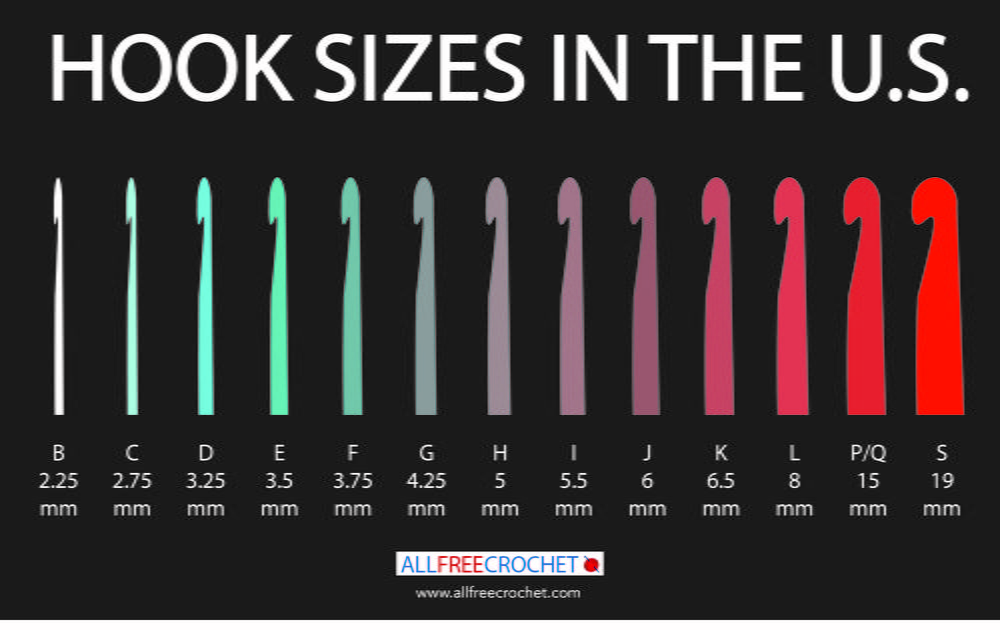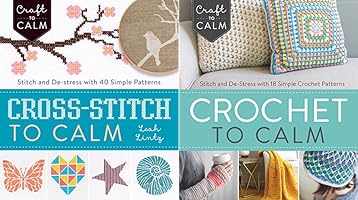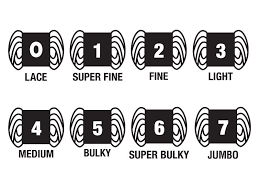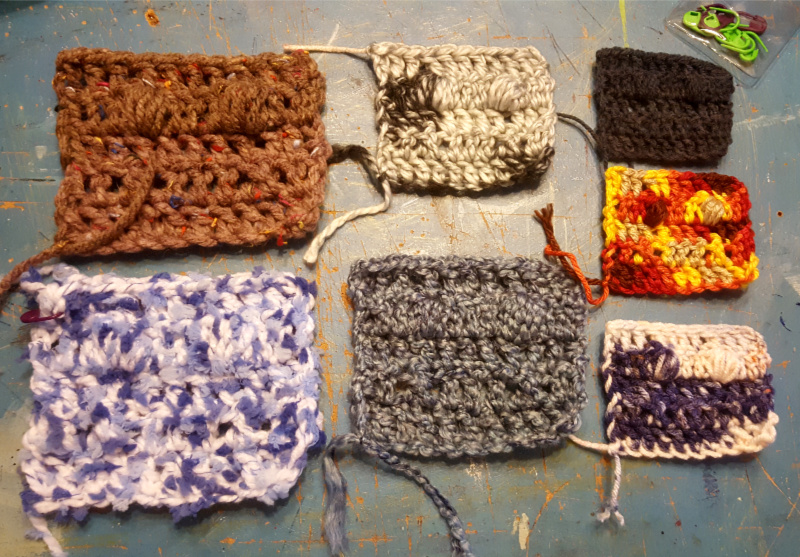Imagine sitting down for your first crochet project, excitement bubbling as you unravel your new yarn. But wait—how do you know which crochet hook size to use? This handbook breaks down the often-overwhelming topic of crochet hook sizes, guiding you through the decision-making process with ease and personal insights that make learning enjoyable.
Understanding the Importance of Crochet Hook Sizes
When you dive into the world of crochet, one of the first things you’ll encounter is the variety of crochet hook sizes. But why does this matter? Well, the size of your hook can significantly impact your project. It affects tension, stitch definition, and even the overall look of your work. Let’s explore why understanding crochet hook sizes is essential for your crafting journey.
The Impact of Sizing on Tension and Stitch Definition
Have you ever noticed how some crochet pieces look tight and neat, while others appear loose and floppy? This difference often comes down to the size of the hook used. Tension refers to how tightly or loosely you hold your yarn as you crochet. A larger hook can create a looser tension, while a smaller hook will give you a tighter, more defined stitch.
Loose Tension: Using a larger hook can lead to airy, light fabrics, perfect for shawls or summer garments.
Tight Tension: A smaller hook is ideal for projects requiring structure, like amigurumi or blankets.
So, how do you know which tension is right for your project? It often depends on the pattern you’re following and the type of yarn you’re using. Always check the recommended hook size for your yarn. This simple step can save you from a lot of frustration later on.
Different Projects Require Different Sizes
Not all crochet projects are created equal. Each project may call for a specific hook size to achieve the desired outcome. For instance, if you’re making a cozy blanket, you might choose a larger hook to work up quickly. On the other hand, intricate lacework demands a smaller hook for precision.
Here are some common projects and their typical hook sizes:
Scarves: Often use sizes H (5 mm) to J (6 mm).
Amigurumi: Generally requires smaller hooks, like E (3.5 mm) or F (4 mm).
Blankets: Can vary widely, but sizes I (5.5 mm) to K (6.5 mm) are popular.
Choosing the right hook size for your project can mean the difference between a beautiful finished piece and a tangled mess. Think about what you want to create, and select your hook accordingly.
Common Beginner Mistakes Related to Size
As a beginner, it’s easy to make hasty decisions. You might be eager to start your project and grab the first hook you see. But this can lead to mistakes. Here are a few common pitfalls:
Ignoring the Pattern: Always check the recommended hook size in your pattern. Skipping this step can lead to sizing issues.
Using the Wrong Yarn: Not all yarns work well with every hook size. Make sure your yarn matches the hook size for the best results.
Overlooking Tension: If your tension is too tight or too loose, it can ruin your project. Practice with different sizes to find what works for you.
Remember, “Choosing the right hook size can be the difference between frustration and flow in your crochet journey.” This quote resonates with many crafters. It’s a reminder that the right tools can enhance your experience and lead to beautiful results.
Understanding crochet hook sizes is the key to ensuring your projects turn out beautifully and fit for purpose. So, take your time, experiment with different sizes, and enjoy the process. Happy crocheting!
Crochet Hook Size Chart: A Reference for Beginners
When you first dive into the world of crochet, you might feel overwhelmed by the many choices available. One of the most crucial decisions you'll make is selecting the right crochet hook size. Understanding this can significantly enhance your crafting experience.
Standard vs. Metric Sizes
First, let’s talk about sizes. Crochet hooks come in two main sizing systems: standard and metric. The standard sizes are often labeled with numbers, while metric sizes are measured in millimeters (mm). For example, a size H hook in the standard system is equivalent to a 5 mm hook in the metric system.
Why does this matter? Well, if you’re following a pattern, it’s essential to know which size the designer intended. Using the wrong size can lead to a project that’s too tight or too loose. Imagine trying to fit a square peg into a round hole. It just doesn’t work!
Differences Between Material Types
Next, let’s explore the different materials used to make crochet hooks. The most common types are aluminum, bamboo, and plastic. Each material has its unique feel and can affect your crocheting experience.
Aluminum Hooks: These are popular for their smooth finish. They glide easily through yarn, making them a favorite for many crocheters. Sizes typically range from 2 mm to 10 mm.
Bamboo Hooks: These hooks are lightweight and warm to the touch. They offer a bit more grip than aluminum, which can be helpful for beginners. However, they may have different tension effects, so be mindful of that.
Plastic Hooks: Often the most affordable option, plastic hooks are great for beginners. They come in various colors and sizes, but they may not provide the same smoothness as aluminum or bamboo.
Choosing the right material can make a difference in your comfort and ease of use. Think about how you want your hook to feel in your hand. Do you prefer something lightweight? Or do you like the warmth of bamboo?
How to Read a Size Chart Effectively
Now, let’s discuss how to read a size chart. A size chart is your best friend when selecting a crochet hook. It can alleviate confusion and guide you in making the right choice. Here’s how to use it:
Identify the Yarn Weight: Different yarns require different hook sizes. Check the yarn label for recommendations.
Match the Size: Look at the size chart to find the corresponding hook size for your yarn weight. Remember, it’s essential to match the metric size with the standard size if you’re using a pattern.
Consider Your Tension: Everyone crochets differently. If you tend to crochet tightly, you might want to go up a size. If you’re more relaxed, a smaller hook might work better.
In summary, understanding crochet hook sizes is vital for your crafting journey. A size chart is essential for beginners as it helps you make informed choices about which hook to use for various yarn weights. Remember, the right hook can make all the difference in your project’s outcome.
So, are you ready to grab your yarn and hook? The world of crochet awaits!
Tips on Choosing the Right Crochet Hook Size for Your Project
Choosing the right crochet hook size can feel overwhelming. With so many options, where do you start? The answer lies in understanding a few key factors. Let's break it down.
1. Consider Yarn Weight and Texture
Your yarn is the foundation of your project. It’s essential to know its weight and texture. Yarn comes in various weights, from lace to bulky. Each weight has a recommended hook size. For instance, a fine lace yarn typically pairs well with a smaller hook, while a bulky yarn requires a larger one.
But what about texture? Some yarns are smooth, while others are fuzzy or textured. A smooth yarn glides easily on a hook, making it easier to work with. In contrast, a textured yarn might snag. This can affect your choice of hook size. If you’re using a textured yarn, you might want to go up a size to prevent snagging and ensure a smoother crocheting experience.
2. Experimenting with Sizes for Personal Comfort
Every crocheter is unique. What works for one person may not work for another. This is where experimentation comes in. Don’t be afraid to try different hook sizes. You might find that a slightly larger hook feels better in your hands. Or perhaps a smaller hook gives you more control over your stitches.
Think about it: if you’re comfortable, you’ll enjoy crocheting more. And that’s the goal, right? So grab a few hooks and see what feels best. Remember, it’s all about finding your sweet spot.
3. Real-Life Examples of Selections Based on Project Type
Let’s look at some real-life examples. If you’re making a delicate lace shawl, you might choose a smaller hook to create tight, intricate stitches. On the other hand, if you’re crafting a cozy blanket, a larger hook will help you work up the project faster and keep it soft and squishy.
Another scenario: you’re making amigurumi toys. These often require a tighter stitch to prevent stuffing from showing through. In this case, you’d likely opt for a smaller hook, even if the yarn suggests a larger size.
These examples show how your project type can influence your hook choice. Always consider the end goal of your project when selecting your hook size.
Trial and Error is Part of the Learning Process
As you dive into the world of crochet, remember that trial and error is part of the journey. You may not get it right on the first try, and that’s okay! Each project teaches you something new. You’ll discover what works best for you through practice.
Every crocheter has unique preferences. Some prefer a looser stitch, while others like it tight. Embrace your style! The more you crochet, the more you’ll understand your preferences.
"It's not always about the number on the hook, but the feel in your hands that makes a project enjoyable."
So, as you choose your crochet hook size, keep this quote in mind. It’s about the experience and joy of crocheting. Focus on what feels good in your hands, and let that guide your choices.
In summary, choosing the right crochet hook size involves understanding your yarn, experimenting for comfort, and considering your project type. With practice, you’ll find the perfect hook for every project.
Personal Anecdote: My Journey with Crochet Hook Sizes
Every crocheter has a story. Mine began with a simple gift project. I was excited, ready to create something special for a friend. But I made a rookie mistake. I grabbed a crochet hook that was too small for the yarn I chose. The result? A tiny, misshapen item that looked nothing like the cozy scarf I envisioned. It was embarrassing. I had to admit my blunder. But that moment taught me something valuable.
Learning from Mistakes
Have you ever felt that sinking feeling when you realize you've made a mistake? It's tough. But mistakes can be your best teachers. After my embarrassing incident, I decided to dive deeper into the world of crochet hook sizes. I learned that each hook size affects the final product. The thickness of the yarn, the tension in your stitches, and even the overall look of your project can change drastically based on the hook you use.
Instead of shying away from my mistake, I embraced it. I started experimenting with different hook sizes and yarn types. I discovered that trying new things can lead to unexpected joy. It’s like tasting a new flavor of ice cream. You might find a new favorite!
Finding My Go-To Size
After much trial and error, I finally found my go-to hook size. It felt like finding a missing puzzle piece. Suddenly, my projects started to look polished and professional. I could create with confidence. No more guesswork. Just pure enjoyment.
Finding that perfect hook size was a game-changer. I realized that every crocheter has their unique preferences. What works for me might not work for you. And that’s okay! The beauty of crochet lies in its diversity. You can experiment, make mistakes, and learn along the way.
Embracing the Journey
As you embark on your crochet journey, remember that it’s not just about the finished product. It’s about the process. Each stitch you make is a step towards growth. Don’t be afraid to make mistakes. They are part of the learning curve. You might find joy in unexpected places.
So, the next time you pick up your crochet hook, take a moment to reflect. What size are you using? Are you comfortable with it? If not, don’t hesitate to try something new. You might just discover a new passion.
In the end, crochet is more than just a hobby. It’s a journey filled with ups and downs. Embrace every moment. Celebrate your successes and learn from your mistakes. You are not alone in this. Many beginners face the same challenges. Sharing these experiences creates a sense of community.
So go ahead, grab your yarn and hook. Dive into the world of crochet with an open heart. You never know what you might create or learn along the way.



